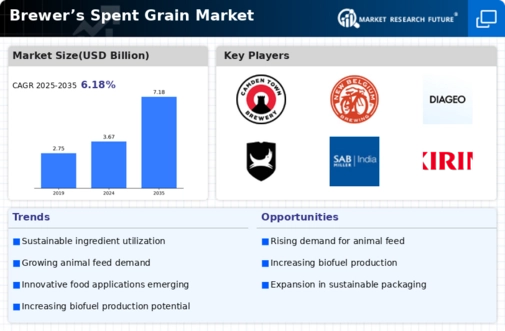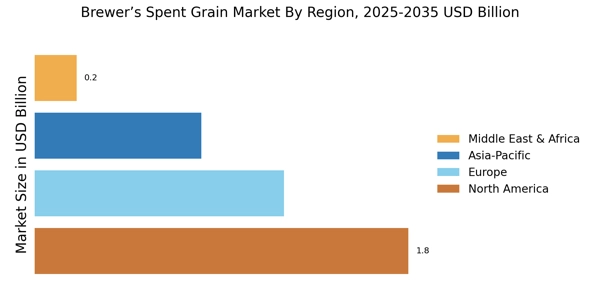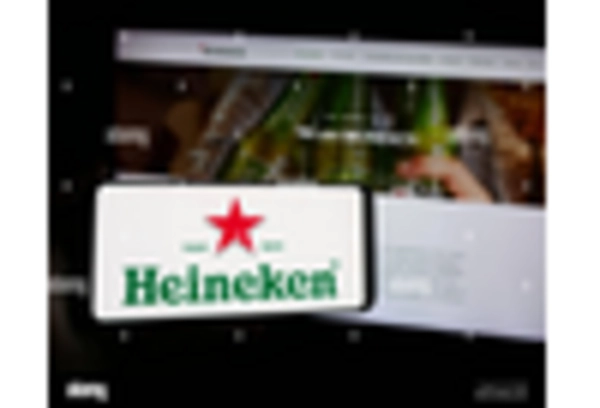Regulatory Support
The Brewer's Spent Grain Market is benefiting from regulatory support aimed at promoting waste reduction and resource recovery. Governments are implementing policies that encourage the utilization of byproducts from food and beverage production, including spent grain. These regulations often provide incentives for breweries to adopt sustainable practices and explore innovative uses for their waste. For example, some regions offer tax breaks or grants for companies that invest in technologies to process spent grain into value-added products. This regulatory environment is likely to foster growth in the Brewer's Spent Grain Market, as more breweries seek to comply with sustainability mandates and capitalize on available support.
Nutritional Enhancement
The Brewer's Spent Grain Market is experiencing a notable shift towards nutritional enhancement. Spent grain is rich in protein, fiber, and essential nutrients, making it an attractive ingredient for health-conscious consumers. As the demand for functional foods rises, manufacturers are incorporating spent grain into various products, including snacks, cereals, and protein bars. Recent studies suggest that spent grain can improve the nutritional profile of these products, appealing to a growing segment of health-oriented consumers. The Brewer's Spent Grain Market is thus likely to expand as food producers recognize the potential of spent grain to enhance product offerings and meet consumer demands for healthier options.
Sustainability Initiatives
The Brewer's Spent Grain Market is increasingly influenced by sustainability initiatives. As environmental concerns rise, breweries are seeking ways to minimize waste and enhance resource efficiency. Brewer's spent grain, a byproduct of the brewing process, is being repurposed for various applications, including animal feed, biofuels, and bioplastics. This shift not only reduces landfill waste but also contributes to a circular economy. In 2023, it was estimated that approximately 85% of spent grain was utilized in some form, indicating a strong trend towards sustainable practices. The Brewer's Spent Grain Market is thus positioned to benefit from these initiatives, as more companies adopt eco-friendly practices and consumers increasingly favor sustainable products.
Consumer Awareness and Demand
The Brewer's Spent Grain Market is increasingly shaped by consumer awareness and demand for sustainable and nutritious products. As consumers become more informed about the environmental impact of food production, there is a growing preference for products that utilize byproducts like spent grain. This trend is evident in the rise of brands that highlight their use of spent grain in marketing campaigns, appealing to eco-conscious consumers. Market data indicates that products featuring spent grain have seen a surge in popularity, with sales increasing by over 30% in the past year. The Brewer's Spent Grain Market is thus likely to thrive as consumer preferences continue to evolve towards sustainability and health.
Diversification of Applications
The Brewer's Spent Grain Market is witnessing a diversification of applications that extends beyond traditional uses. While spent grain has long been utilized as animal feed, innovative applications are emerging in sectors such as food, pharmaceuticals, and bioplastics. For instance, spent grain is being explored as a natural thickening agent in food products and as a source of bioactive compounds in nutraceuticals. This diversification is driven by the need for sustainable alternatives and the increasing recognition of spent grain's value. The Brewer's Spent Grain Market is thus poised for growth as new applications are developed, potentially leading to increased revenue streams for breweries and manufacturers alike.


















Leave a Comment